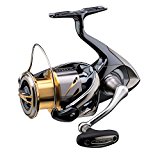Lake Trout An Introduction

Lake Trout (Salvelinus namaycush), despite their name is not a trout at all, though it is a member of the same Salmonidae family as its cousins the Salmon and Trout.
Lake Trout are actually classified as Charr.
The Lake Trout is also know by many other names due to its rather significant distribution the world over. Other names that the Lake Trout is known by include: laker, mackinaw, Great Lakes trout or charr, salmon trout, landlocked salmon, gray trout, great gray trout, mountain trout, tongue, togue, namaycush or masamay cush, siscowet, fat trout, paperbelly, bank trout, bumper and humper.
Identification
They have more or less have the same slender body as the trout and the salmon, though the body becomes thicker as the Lake Trout becomes much bigger.
The tail is moderately forked, even more than the other 4 Charr.
Like the Arctic Charr, its scales are small leaving the skin feeling smooth.
The Lake Trout has several rows of teeth. Although they are weak and less numerous than other charr, they can cause a bit of damage if you’re not careful handling the fish.
The head proportionally is not as big as a largemouth bass, but it is a descent size. However the larger the Lake Trout, the smaller the head becomes proportionally to the rest of the body.
Common Traits with Other Charr
The Lake Trout has white leading edges on all its lower fins and light colored spots on a dark background like the other Charr. The body is slightly grey brown with off white spots that extend onto the dorsal, the adipose and the caudal fins.
Known by Numerous Names
Adding to the confusion is the naming convention of the Charr species. The Arctic Charr is known by over 15 different names. The ocean going Arctic Char is most often called the char, red charr or arctic charr.
Coloration is highly variable. Unlike the Arctic Charr, there are no red, black or haloed spots of any kind over its entire body.
Pay special attention to their general color tone.
Lake Trout with lighter tones indicate that they are deep-dwelling fish. This is usually an indication that they live in southerly lakes.
Darker Lake Trout with reddish and orange tones, indicate that these fish come from less fertile, tannin-colored northern lakes.


